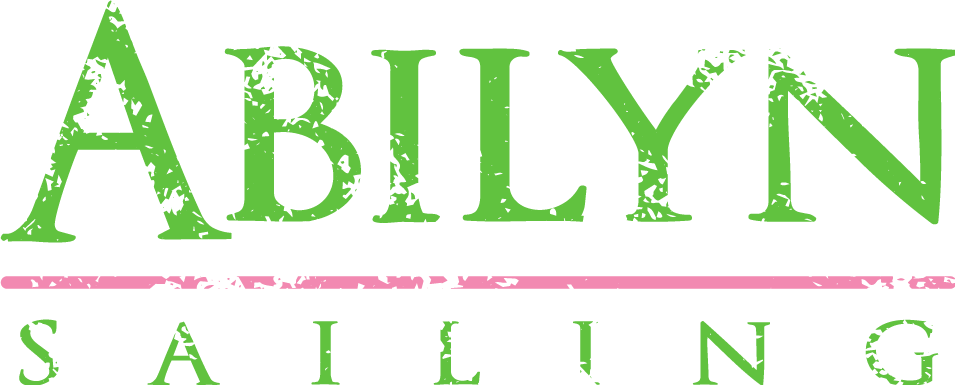The learning curve for being able to sail a Mini 6.50 at all is extremely high. To give you a sense of the complexity of sailing this boat, the protocol for gybing Abilyn's oversize kite involves a 30-step process. Abilyn's asym is flown on an eight-foot articulating sprit pole controlled laterally by two afterguys, and controlled vertically by an adjustable bobstay. To fly the kite, the pole is articulated by a line led from the cockpit to a lever on the inboard end of the pole, which articulates the pole 170 degrees from a resting position on the lifelines (see top photo) to a reaching position about 10 degrees to weather of centerline (see below photo). The boat also has runners, which must be gybed along with the asym and mainsail. In certain conditions, the runners are essential to ensuring that the mast doesn't snap clean off.
During our early practices in June 2013 after the we commissioned the boat at McMichael's Yacht Yard, my co-skipper Sam picked up gybing the asym fairly quickly, which is a testament to his lifetime of sailing experience, and achievements in the International 420 class. However, my inability to catch on as a fast as Sam was quickly sending me into a spiraling vortex of doubt about buying this boat, and whether I would ever be able to sail her effectively. I had to remind myself that picking up a new activity--including sailing a new boat--sometimes involves a long period of "suck-assedness." Yes, that's how I will describe this period.
I had no expectations for that Wednesday night in July. My plan was to head out alone (for the first time), put the sails up, and see what I could do. After letting my body process the lactic acid that had built up in my legs, I hoisted the big fathead main and 140% jib and headed out of Larchmont Harbor with a warm, 10-12 knot breeze out of the west. Despite the favorable conditions, nobody was out on the water. Abilyn and I were alone on the dance floor. We reached over to Manhasset Bay, turned downwind and set the kite to port.
After settling in, I began the gybing process for 10-15 knot conditions. Maintain a course of 150 degrees TWA. Ease the weather afterguy to bring the pole to center. Take up slack on the lazy runner. Trim the spinsheet to bring the clew patch around the forestay. Turn the boat. Keep trimming that spin sheet. Tension the lazy runner to kick the main over. Exit the gybe at 140 TWA. Don't head up too high. Release the old runner to let the main fall to leeward. Fall off. Trim the afterguy to bring the pole to its new weather position.
When the kite gybed cleanly, frankly I was astounded. I looked around to see if anybody saw it, just like Tom Hanks looked around to see if anybody had seen him make fire. Maybe it was an accident. So I gybed again. And again. And again. Sailing across Long Island Sound that night, I gybed maybe 10 times back to back. They were all clean. I was awash with a wave of relief, and excitement for the future. You could see the grin on my face all the way back in NYC.
It was 2130 at this point. I doused the kite, hoisted the jib, and sailed upwind back to Larchmont Harbor.
I have many fond sailing memories. Blast reaching SE from Newport to Bermuda across the Gulf Stream in 30 knots of breeze, and sailing with my wife and daughters in the BVI are two unforgettable memories. But what made that Wednesday night aboard Abilyn my most memorable sailing moment ever is that it was a breakthrough moment in an extremely challenging endeavor to learn such a technical boat. With all do respect to Mr. Bekking, Abilyn is not "just a tool". She is a living, breathing being, and she understands my ambitions as a sailor.
Abilyn spoke to me that night. She let me know that I have what it takes to sail this boat. Or maybe she was rewarding me for biking 25 miles just to come play with her. Only time will tell.
See you out on the water.







